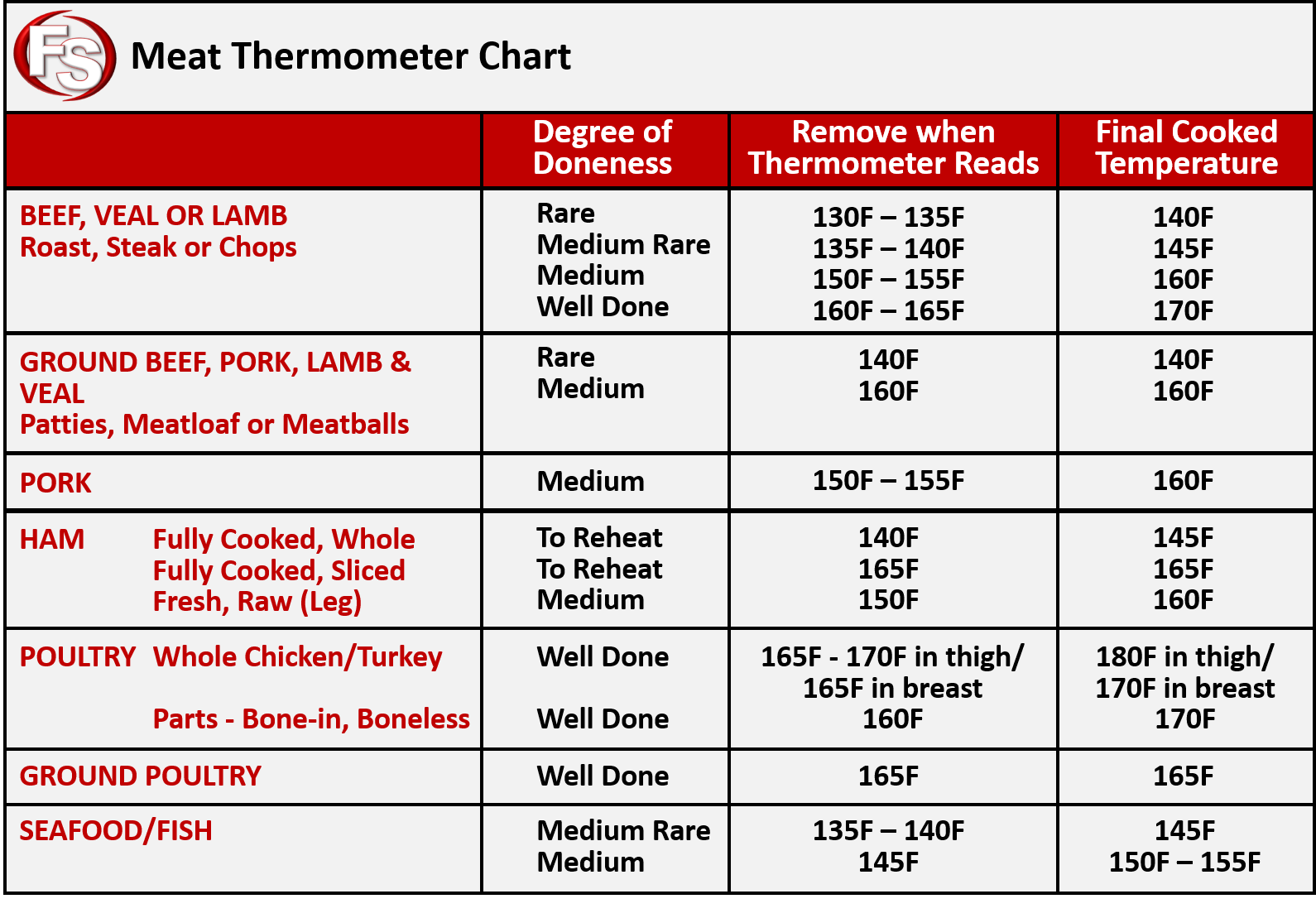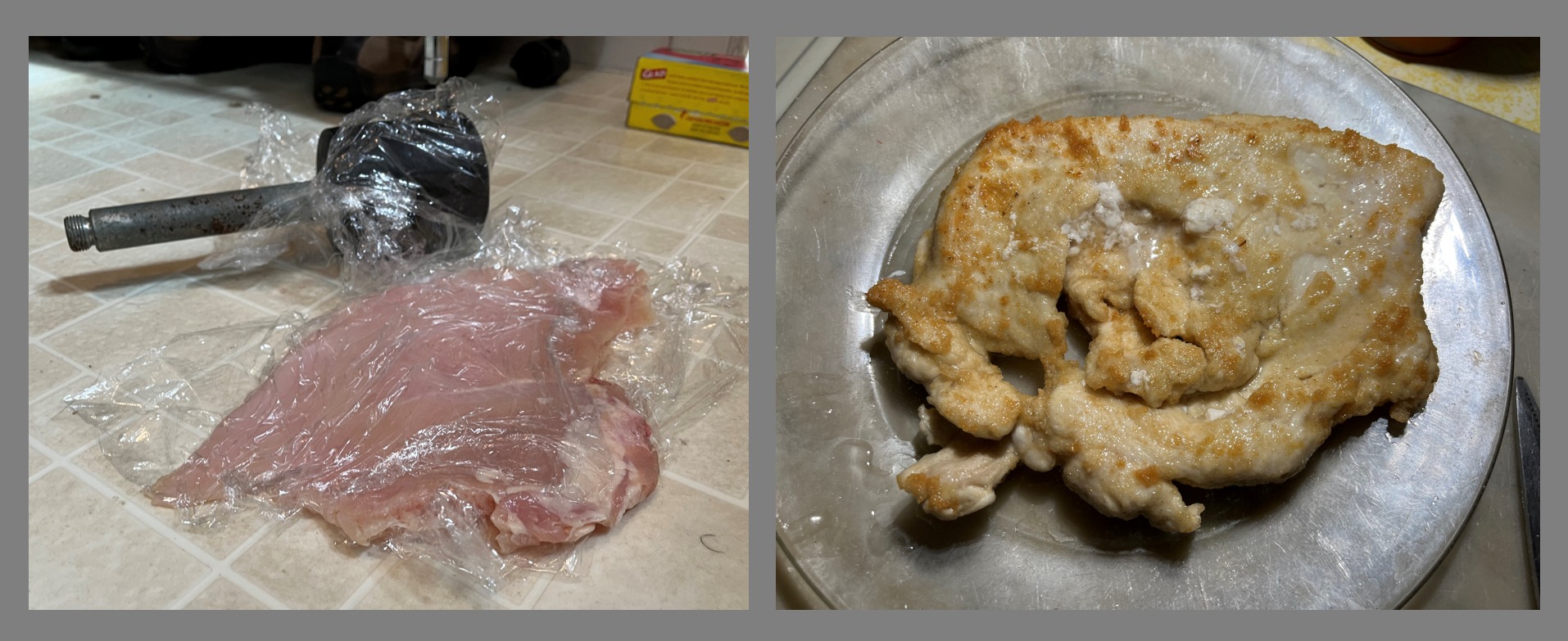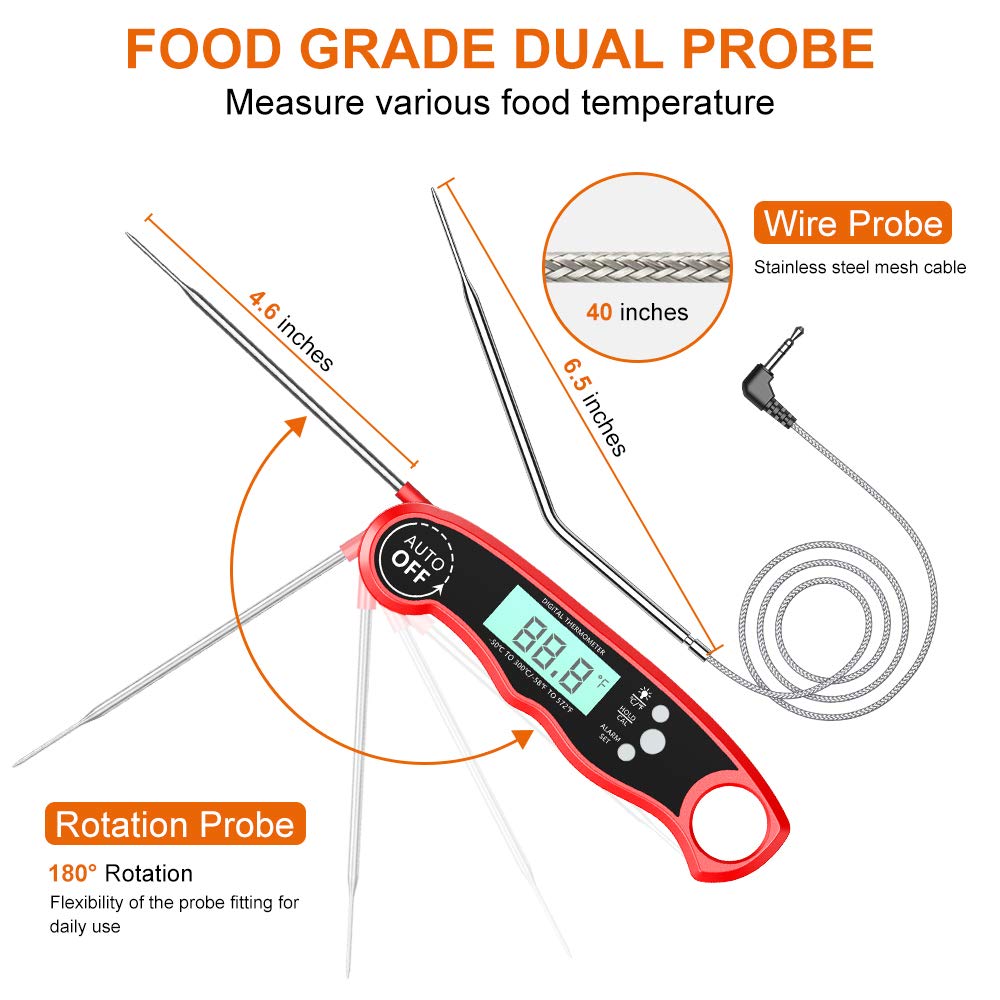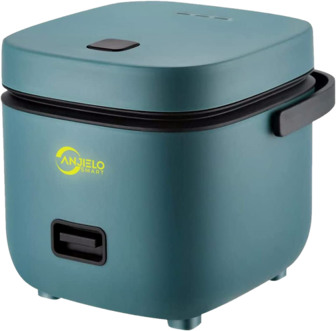How to Infuse 'Diet Foods' with Taste

Peasant Cooking Virtuoso: My grandmother at age 85 at her Arkansas home. She was 1/4 Cherokee and her job was cooking for the field hands. Born in 1896, she became expert at preparing local fish, pork, beef and farm fresh produce. The best meals use the freshest ingredients prepared simply. I was addicted to her ethereal cooking. She taught me the food basics I use to this day.
As a young athlete I never paid a damned bit of attention to the nutritional content of anything. As I grew older I developed an interest in melding my newfound nutritional awareness with the peasant food preparation skills that I learned from my elderly grandmother. She resided on a spooky farm in the Arkansas delta. Tucked away in Yoda-like solitude, she taught me how to prepare foods I liked and naturally gravitated towards. Her approach was Old School all the way. Farm fresh foods were prepared simply, letting the natural flavor of fresh ingredients shine through. She intuitively laid a table that was a good balance between her garden vegetables (canned in the winter) and local pork, beef and fish. She raised chickens, turkey and geese, Freshwater fish caught from ponds and the Mighty Mississippi, were plentiful between April and October.
Purposefully Primitive Performance Eating is all about melding great taste with great ingredients. When it comes to eating, taste trumps everything. We love great tasting food and hate bland gruel. Learn to prepare foods that are both beneficial for you and tickle your taste buds. Bland food needs to be transformed into tasty food. Creatively prepare acceptable, wholesome, beneficial foods in quantities sufficient enough to keep your refrigerator stocked for 3-7 days. When its time to eat, simply pop the proper portion size into the microwave and two minutes later eat a power-packed, terrific tasting meal. The idea is to create diet meals you actually look forward to eating. It is important that you learn basic food preparation tactics. Come to grips with elemental food preparation. That way you are in control of your nutritional destiny and not preparation-dependent on someone or something. Here are a few classic food preparation techniques.
Grilled Steak
You would be surprised how many folks cannot grill a decent piece of meat. Nothing is easier, quicker or more delicious. Take the steak out of the refrigerator and let stand at room temperature for at least 30 minutes as this softens the fat. Sirloin, rib eye, filet mignon, strip, T-bone, porterhouse, flank or skirt steak, are best grilled on a red hot grill that has been oiled with olive oil or a piece of steak fat. Generously season with coarse kosher or sea salt and pepper right before placing on the hottest part of the grill. Don't walk away or get distracted; pay attention and flip the meat only once. Leave the 1st side totally along for 1-3 minutes. You can also use the oven broiler. The length of steak cook time varies depending on size and thickness: if this is problematic use a meat thermometer. See chart below. When done, let the steak stand for at least five minutes to allow the juices to settle. A properly grilled steak is one of life's true pleasures. My personal favorite is a perfectly prepared cowboy rib steak or a fork tender filet.

Squashed Chicken
Boneless skinless chicken breast is the absolute number one bodybuilding food. White meat chicken can be expensive these days so a reasonable substitution would be boneless skinless thighs or bone-in skin-on thighs. It is easy to snip the thigh bone from the meat. Preparing a chicken breast that is delectable, moist and tender can be difficult. There is a method that produces absolutely the best breast I've every tasted. This method of preparation allows you to produce a chicken breast that can be sauteed, baked or grilled to succulent perfection. The breasts can be stacked and stored in the refrigerator for up to one week.
The key is to squash the bulbous breast flat prior to preparation. By eliminating the rotund profile, by squashing the raw breast into a low rider flattened configuration, you can cook a perfectly done, juicy breast every single time. From start to finish it takes less than ten minutes to prepare a squashed breast. I pay a few extra cents per pound and buy organic chicken - not only is it chemically free, the taste of the bird is significantly superior. Set a breast on a cutting board. Flatten the breasts one at a time with a kitchen mallet. The force used to mash a breast is a little too intense to perform on a kitchen counter; the repeated blows could conceivably damage the counter surface. Try placing the cutting board on the floor. I go outside on my deck in the good weather, use a 10 pound tamp and flatten a dozen breasts inside of five minutes. I cover the tamper and small square plywood piece outside with grocery bags. Once the fibrous core is hit square the breast will give way and flatten out nicely. The breast optimally ends up about 1/8 to 1/4 inch thick.

I often store the flattened breasts in a Jacuzzi bath, usually a vinegar-based marinade. I use Stubb's marinade if cooking for myself or create a custom marinade blend for my wife, Stacy, who has severe food sensitivities. The squashed breasts marinate until its time to cook them. A plain squashed breast can be grilled or sauteed and ready to eat inside five minutes. Flattened bird makes you forget all about Colonel Sanders. Here are some of our favorite methods.
Oven, Weber or Big Green Egg Roasted Beef, Lamb, Chicken or Turkey
You can oven roast standing rib roast, leg of lamb, whole chicken, turkey or duck. Roasted whole birds are easy to prepare.
For variation I use a Weber grill. I love the taste of wood smoked meat. Place charcoal in a starter tube in the center of the grill. Lightly soak newspaper or paper towels with a little vegetable oil and place a balled up oiled paper underneath the charcoal starter and light it. In 10 to 15 minutes the coals will be white hot. When the coals turn white, divide them into two equal piles on opposite sides of the grill. In the middle place an aluminum drip pan. This is the indirect method of cooking. I like to place big chunks of water-soaked hickory, mesquite, apple or peach wood on top of the hot coals before setting the top grate in place. Place the protein payload, be it beef, lamb, turkey, duck or chicken in the center over top the drip pan. Put the lid in place and leave it alone. Use the meat thermometer to determine when the protein payload is thoroughly cooked. The same oven roasting temperatures apply to the Weber. Regardless the protein payload, the final finished product is mind-blowing: succulent, smoke-infused meat, fowl or seafood rendered fork tender and smoky delicious.
Brined Poultry
Brining is a centuries-old method of making fowl tender and juicy by soaking the turkey, chicken or duck in a pail of water containing salt and sugar. The salt water is sucked into the cells and volume-moisturizes the meat. I brine whole turkey and chicken by submerging the bird in a 5 gallon paint bucket lined with a garbage bag. I fill the bucket with warm water and mix in a cup of salt and a 1/2 cup sugar and let it soak. Most experts say don't brine longer than two hours. I brine a whole bird and sometimes chicken breasts. I find in every instance the brined bird turns out tender and juicy. Brining is particularly appropriated for roasting and smoking.
Fish
Whole fish or filets can be sauteed, grilled or steamed in a matter of a few minutes. Atlantic salmon, steelhead, haddock, cod and trout are my usual fish choices. I can have a perfectly prepared piece of fish ready to eat inside 5-15 minutes using a skillet, a spatula, a little olive oil or coconut oil and some dry spice. Sometimes I'll dredge the trout, cod or haddock filets in Panko bread crumbs or oat flour. I often sprinkle Paul Prudomme's Blackened Redfish dry rub on fish.
Grilling is easy: oil the grate, let the fish cook mostly on side number one. Fish can be baked on a pan or steamed in a bag. To steam, place the fish on a big square of aluminum foil, throw in some herbs, perhaps some thin sliced onions, scallions or ginger. Add a dash of wine, seal the aluminum foil and place it on a cookie sheet. Slide the whole thing into a preheated over; after 10 minutes check the doneness. The fish steams itself in the bag and this hassle-free preparation method produces a terrific tasting fish dish within 20 minutes of walking in the door after a long day at work. Please avoid battered frozen fish.
Shellfish
Nothing tastes better: shrimp, scallops, crab, squid, lobster, mussels, clams, oysters - the fresher the seafood the more vibrant the taste. Do you live along one of the coastlines and have a fisherman's market or wharf in your area where the locals sell seafood? Frequent it! If you live inland, find where the river fishermen sell their divine freshwater fish. Again, think of the tortured route your supermarket seafood takes ... catch it, sell it, transport it, reroute it - all before it gets to you.
According to my nutritional bible, The United States Department of Agriculture Handbook #8, a 100 gram portion of shrimp contains 18.1 grams of protein, 0.8 grams of fat, 1.5 grams of carbohydrate and 91 calories - a 100 gram portion is slightly less than 1/4 pound. Once you buy it, don't wait to cook it. Everybody steams shrimp and most folks overcook shrimp.
Try this alternative method for shrimp preparation.
Once you have cooked and shelled the shrimp, you can store in the refrigerator for future use. Shrimp makes a killer meal and is always a hit when guest drop by. Mixing shrimp with vegetables gets maximum mileage out of this expensive ingredient. Don't purchase teeny-tiny popcorn shrimp go for the largest possible crustaceans. Recently I have found a frozen super colossal shrimp at Walmart that costs $9.98 in our area. Reconsider shrimp as a part of your meal rotation.
As I told a novice trainee who complained that shrimp were too expensive to be included in his dietary game plan. Consider taking all the money you previously spent on $4 or more a pint of ice cream, donuts, pastries and don't forget six-packs of Pepsi and beer and redirect this recovered income towards some relatively fat free seafood!
Steamed Rice
A rice steamer is a terrific tool and quite inexpensive. I use the nutty brown rice variations. Keep a cooked supply in the refrigerator ready for instant use. Nothing could be easier than preparing a mountain of rice for consumption in the coming week. Don't overcook rice or it will dissolve into a mound of starchy mush to make sure the rice is evenly done, I stir the steaming rice with a long handled wooden spoon during the cooking procedure to keep the rice on the bottom from getting over done while the rice on top remains crunchy. I particularly love organic Lundberg Black Japonica, a gourmet bland of black and mahogany rice: rich, nutty flavored, power-packed and gluten free. For those intent on building mass, rice rules! See Amazon link for my recommendation.
Sweet Potatoes
This carbohydrate is highly versatile and nutritious. It is a great substitution for a white potato. Its sweet flavor and color make it a better diet choice to the white potato. This is one of the richest sources of beta-carotene. A nutrient converted into vitamin A after consumption. Preparation ahead of time is easy.
Sauteed Fiber Vegetables
You can create an amazing medley of fibrous carbs that has a multitude of flavors. If you prefer certain fiber carbs and don't like others, add or subtract according to your taste preference. The key to cooking good vegetables is a deep skillet and enough lipid (bacon fat, coconut oil, olive oil) to keep the veg from drying out. I start with a high heat to get the cooking process going and then stir periodically with the pan on a low heat till the veg is sufficiently broken down. Lastly, I remove from the heat and let sit for the flavors to meld. This concoction stores well and I will scoop out a portion to complement my protein portion. I eat some sort of pan sauteed fiber concoction every single day. Fiber veggies include green beans, broccoli, peppers, carrots, etc. Every vegetable will have a little bit different cooking time so you need to experiment.
Farmer Market Foods
Every urban area has a farmer's market. The farmers who live in the region surrounding the city drive into town once a week during growing season and sell their farm fresh wares to City Slickers. When you go to the grocery store to buy produce, that pepper or onion was grown on a Midwest or West Coast mega farm, doused with pesticides and chemicals to keep the bugs off, picked, trucked to a central distribution hub, placed on trucks and driven to your store. All that takes time: the nutritional potency and taste of a vegetable fades in direct relation to the length of time from when it was picked to when it is eaten. Go to the farmer's market and taste the vibrant flavor of fruits and vegetables picked within the last few days. The taste difference is astounding. Eat what is in season and don't allow it to languish in your refrigerator for too long: cook and eat produce as soon as possible.
So Much More
This is a sparse and meager sampling. The idea behind any Performance Eating plan is to eat healthy and eat foods that actually taste terrific. Unless you have a personal chef on staff, unless you still live with your mother, unless you eat out every night, unless your wife, girlfriend or your "significant other" cooks, you need to come to grips with food preparation. It is easy, creative and fun. Good cooking is a bunch of simple procedures followed in a precise sequence. Taste and diet need not be a contradiction in terms.
Learn how to prepare tasty beneficial foods and you will amplify results obtained from weight training and cardio. When you exercise intensely you need to take in sufficient calories in order to speed up recovery and fuel new muscle growth. Over-exercising and under-eating is a cortisol inducing, physiological catastrophe. Let's eat smart and eat tasty and eat enough to recuperate and recover. Eating lots of protein and fiber: that's the backbone. Eating copious amounts of acceptable food will dampen a sweet tooth. And if the sweet tooth persists, check out the Parrillo or Warrior line of nutritional supplements; lots of sweet tasting bars and engineered foods that fool the sweetest of sweet addictions - yet these supplemental foods are acceptable and downright beneficial.
Both Parrillo and Hofmekler advocate for quality, nutrient dense calories. Ori was way ahead of his time pointing out how processed food poisons the body. He asserts we are a poisoned species, at least in the Western World, and detoxification is critical. He further postulates that as a species we have never 'adapted' to the manufactured foods that so dominate modern man's diet. The human body was never designed to utilize the detrimental types of foods we routinely consume. Learn more about my two nutrition mentors below.
Learn more about our nutritional philosophy check out our Nutritional Planning Resource Page. Join the community sign up below to our newsletter and receive our FREE Planning and Periodization Guide. Please feel free to send us a question here or leave a comment below.
Want the inside training scoop?
Join The Community
Our email content is full of value, void of hype, never pushy, and always free. As a BONUS you will receive our FREE planning & periodization template to help you with your training goals.





